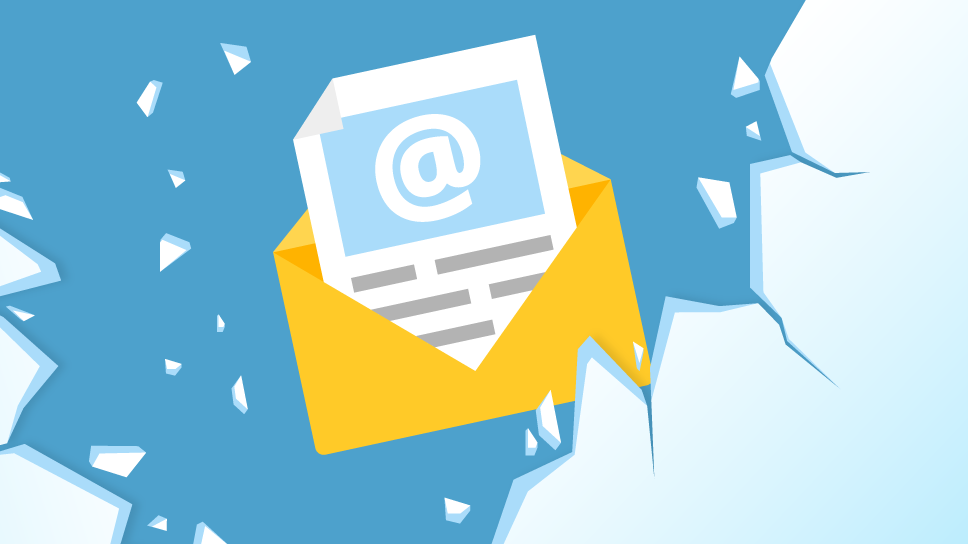
Cold emailing develops into one of the effective strategies for expanding your company. It is immediate, easy to execute, and brings in quicker results. You have come to the right place if you are having trouble or want to learn more about a cold email campaign. Professionals frequently utilize cold emails to initiate communication with their target internet prospects.
There are two reasons why you need to consider a piece of advice on cold email tactics.
- You are aware that sending cold emails is difficult for beginners.
- You are aware that if done correctly, cold email is very successful.
Here is a quick tutorial on the prerequisites that you need to take care of before sending out your first batch of cold emails.
Step 1: Get a Separate Domain
An address for your company’s website—the domain name—is the first step in any successful cold outreach. Your email address will include this name; it is optimal if it comes after the @ symbol.
You now require a domain that will serve as a representation of your brand to potential clients. This stage also affects the reputation of your domain because it is crucial to your brand identification.
If you’re a beginner, chances are that you’ll end up making some mistake, which puts your main domain at risk of being marked as spam for eternity.
Hence, to safeguard your chief domain, we recommend getting a new, similar domain address – solely dedicated to serving your cold emailing efforts.
You can choose a name that is similar to the one currently in use. Just bear in mind that the newly acquired domain should be comparable but not identical and that the domain extension should differ slightly.
Depending on the type of business, generic top-level domains can be divided into several categories. Even if this strategy is less rigid than it formerly was, some concepts still hold.
- .com stands for “commercial,”
- .net for “network,”
- .co for “company/corporation,”
- .io for “Indian Ocean.”
Once you get the new domain, make sure to redirect this one to your main address, so that clients do not end up at a blank zone if they search for you by the new domain address.
To summarize:
If we at Shivyaanchi (shivyaanchi.com) were to start out with our first-ever cold email campaign, we’d get a similar domain (say, shivyaanchi.org). Then, we’d redirect this new address to our primary one.
Step 2: Create an email address on the newly created domain
By utilizing an address on your primary domain, you endanger the standing of your business website and all email accounts created on this domain.
You will experiment a lot with cold email; a much safer option is to set up a second domain with a name that is similar to the primary one but is set aside for outbound campaigns and is completely in your control.
The next obvious step is to create a fresh email address on this new domain.
The produced email should be from a person with a high classification, which is the most crucial consideration. First and first, this is a sign of professional behavior. Second, receiving correspondence from a high authority is eye-catching for readers.
To summarize:
Get a new email address for your new domain.
Use an authentic name, designation, and signature.
For example:
Sheshank Anand | CEO, Shivyaanchi
sheshank.anand@shivyaanchi.org
Step 3: Perform Domain Authentication using SPF, DKIM, and DMARC
Different email service providers employ the collection of records known as SPF (Sender Policy Framework), DKIM (Domain Key Identified Mail), and DMARC (Domain-based Message Authentication, Reporting & Conformance) to confirm the sender’s and their emails’ validity.
In order to stop spammers & fugitives from sending counterfeit emails on your behalf, we use these three security measures. Setting up these records in your domain’s DNS will bring you much closer to guaranteeing that emails sent from your domain are correctly delivered to customers’ inboxes and that your domain remains secure.
Let’s look at them one by one.
An authentication technique called Sender Policy Framework (SPF) maintains a DNS TXT record of IP addresses that are permitted to send emails on behalf of domains.
Domain Keys classified Mail (DKIM) as a type of identity equivalent to a passport or an ID. When you send an email from your server, DKIM is attached so the receiving server can verify with you.
Domain-based Message Authentication, Reporting & Conformance (DMARC), is an email authentication policy and reporting protocol which aids domains in defending against domain spoofing and phishing assaults.
If you are not sure what these authentication methods are, or how to setup the same, please refer to our earlier blogs:
- Email Authentication Protocols (spf, dkim, dmarc) – A Brief Overview
- How to Setup SPF, DKIM, & DMARC for your Domain
Step 4: Setup Your Mailbox for Warmup
It’s important to remember that an email address on a freshly set up domain shouldn’t be utilized for outbound advertising right away! The email address needs to be fully warmed up, and the new domain requires time to establish a solid reputation (at least three weeks).
The amount of positive interaction your email domain generates naturally improves when you use an email warm-up tool. Warm-up tools accomplish this by faking responses and other constructive exchanges.
It’s crucial to realize that warm-up tools send emails and engage in these beneficial interactions with mailboxes in their network, not the inboxes of your prospects, but rather with other warm-up tool users.
The goal is to send a small number of emails per day from your outgoing mailbox to recipient inboxes that will reply to you.
Start out by sending 5–10 emails per day and gradually raise that number.
These activities help to boost your inbox placement generally because email providers rely on their sender reputation ratings on the overall engagement a domain obtains.
Step 5: Patience!
Your brand new email address on a new domain won’t be prepared to send cold email campaigns fluidly and without any interruptions until after a well-executed warm-up.
If your plan is to carry out a full-fledged cold email campaign, with close to 50-100 cold emails/ day, we recommend a warm up period of 20 days minimum.
If you’re going to take things slow (say, sending 100 emails/ week), you should be good to go after a warm up period of 7-12 days.
Wrap Up
The entire algorithm’s limitations are there to keep spam content under control.
By using best practices, you can convince them that you are a real person and not a spammer.
Always keep in mind that improving your sender’s reputation is simpler than improving your spammer’s reputation.
Give the email warm-up procedure careful consideration. It can truly help your campaigns succeed.
The aspects that you’ll need to continuously monitor and keep an eye on, not only during the warm-up phase but later too, are the caliber of your messages and your prospect base, the delivery time parameters, and the volume of your campaign results.
If you continuously send out emails, without getting any replies from your prospects, your efforts might go in vain. At worst, you might get marked as spam for eternity, leaving your new email inbox and domain address of no use.
The above-mentioned setup is just the start, and there’s so much more that needs to be taken care of – your mailing list, subject lines, delivery time, value offer, and the email copy itself.
But these are lengthier discussions for some other times.
Watch out this space for more 
Ace Your Email Marketing Game with Shivyaanchi


